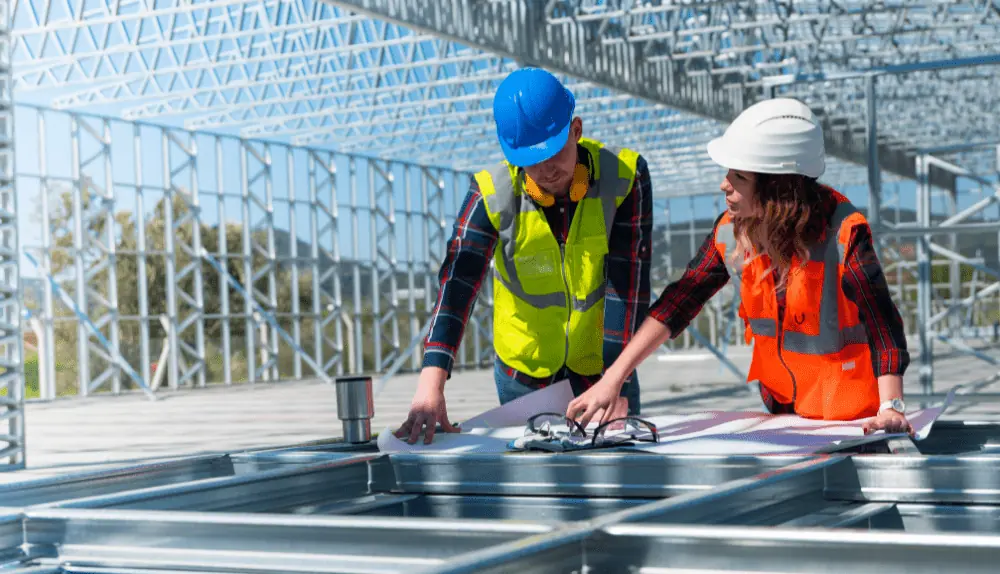The construction industry is a critical one, but it has a giant problem: late payments.
In a sector where cash flow couldn’t be more important to firms’ survival, slow and delayed payments in the construction space cost businesses $273 billion in 2023 — representing nearly 14% of total construction costs, up from 12% in 2022.
Partly to blame is the construction sector’s continued reliance on legacy payment processes that hinder the tracking and collection of B2B payments. But to slow the downstream and upstream impact of late payments across the industry, something is going to have to give, and fast.
“Late payments negatively impact working capital and, by extension, cash flow,” Chris Lolli, vice president and general manager of B2B product, partnership and client management at American Express, told PYMNTS. “But beyond the negative impact on cash flow, it really damages relationships between buyers and suppliers.”
The conversation centered on findings from the latest B2B and Digital Payments Tracker® Series, which was produced by PYMNTS Intelligence in collaboration with American Express.
Manual processes and a lack of automation can often lead to unnecessary disputes and reconciliation challenges. These are compounding factors that together can undermine trust and erode collaboration within the construction space, where large suppliers, contractors, subcontractors and others interact and transact within projects.
However, as Lolli explained, there are effective ways to automate payments on both sides, improving days payable outstanding (DPO) for the buyer and days sales outstanding (DSO) for the supplier, while helping B2B working relationships remain intact and even flourish.
Construction businesses can adopt technologies like accounts payable (AP) automation and accounts receivable (AR) automation to prevent late payments.
This automation also allows for better communication and helps foster better relationships between buyers and suppliers.
Embracing an Overhaul of Legacy Payment Systems From the Ground Up
The construction industry is built from fragmented supply chains where there are small players, medium-sized players and large players that all need to be connected.
Delayed payments affect everyone in the construction industry, but suppliers feel the impact the most. Late payments hinder their ability to engage with customers, grow their businesses and meet their customers’ needs. However, AR automation can address these challenges by moving data with the payment and eliminating manual processes. This frees up resources for higher-order work and helps build stronger customer relationships.
Still, for the necessary changes to be enacted across the industry, suppliers need to ensure they are set up to receive digital or automated payments from their customers, avoiding the need for manual processes. By automating, suppliers can speed up the payment process, improve reconciliation, and exchange information more efficiently. This, in turn, allows buyers to extend their payment terms while ensuring timely payments to suppliers, benefiting both parties, Lolli said.
“The worst-case scenario is when your buyer is automated and they’re sending you digital, automated payments either via email or virtual card or a combination, but then you have to literally take them out in a manual process with a team of people and re-enter them into another system,” he said. “That’s just a bad experience and inefficient all the way around.”
By automating payments, suppliers can help reduce late payments, improve reconciliation and enhance their relationship with buyers. Additionally, automation solves invoicing problems and facilitates integration into existing systems, benefiting both buyers and suppliers.
Lolli noted that the “Amex Trendex: B2B Edition” found that 76% of construction businesses surveyed said they are planning to start or further automate their payments made to suppliers, while 83% of those surveyed are planning to do likewise for payments received from customers.
Automation helps level the construction playing field, allowing smaller B2B suppliers and buyers to compete more effectively with larger enterprises.
Digital Optimization Can Put Construction Payments on Solid Ground
Construction businesses can keep up with technology and digital transformation by starting with AP and AR automation. Automating virtual cards and email payments enables easy payment processing and helps manage working capital effectively.
By investing in digitization and automation, suppliers can deepen their relationship with customers and focus on growing the bottom line.
This includes making it easier than it is with a manual process for buyers to purchase “what they want, when they want, and the quantities they want, including tapping credit lines available to that customer by partners like American Express.”
“Amex is focused on building a multi-rail digital network, a global network, that is aimed at reducing friction, connecting buyers and suppliers in a way that drives value for both while facilitating commerce,” he said.
Looking ahead, digitization of payments and the development of multi-rail payment solutions will drive greater efficiencies in the construction space, he said. Digitization will increase the value of accepting multiple payment solutions for suppliers and encourage buyers to embrace automation.

